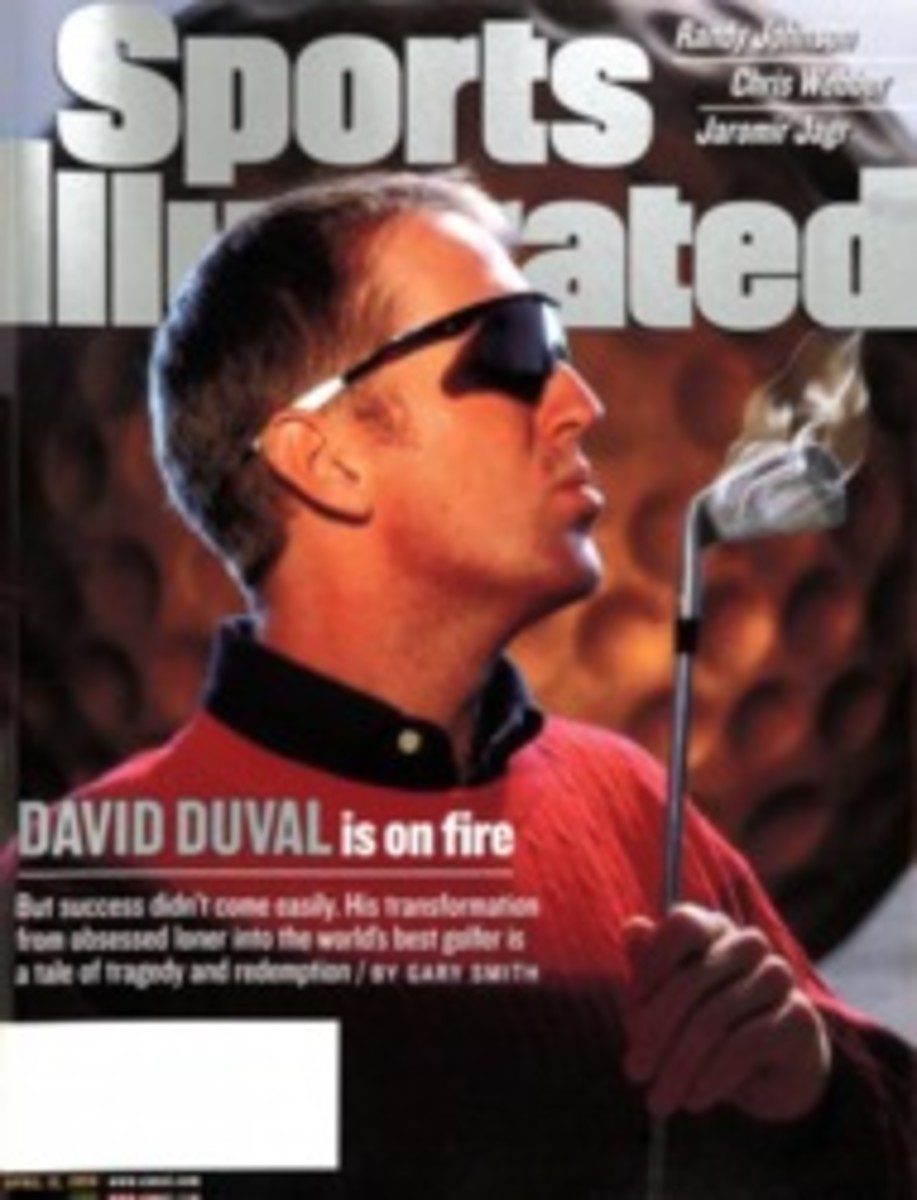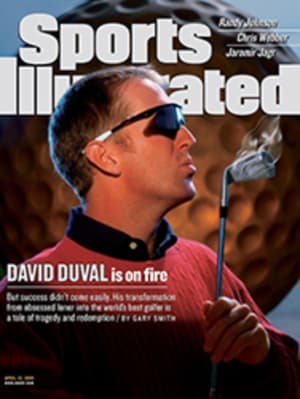
Old Masters By adhering to its minimalist TV policy, Augusta National gives stodgy tradition a good name
Hermetically protected as we are from daffodils or robins or
sunbeams up here in our northern urban household, the first sure
sign of spring is being piped in to us this weekend. The Masters
is on television, and the changing of seasons can now officially
begin. Americans in general, and this one in particular, don't
much care for tradition. We are an adolescent nation founded in
rebellion and the rejection of grown-up ritual. We broke with
England because it wanted us to stop wearing headphones to the
dinner table and to speak only when spoken to. Since, we've
opted for traditions that, like the Platte River, run a mile
wide and an inch deep.
The Masters is, of course, the high shrine of manufactured
sports tradition. It is as stodgy as a fox-trot, as dated as a
pair of spats. Prim and manicured as your Aunt Hattie's window
box, it is a genteel anachronism, a waxworks tribute to a time
that never was. It is a wheezing, elitist dinosaur in a green
jacket and plaid pants. And I love it. I love it because in an
age of irony it takes itself so damned seriously. I love it
because it is run by some old coot named Hootie. I love it
because by Sunday afternoon the greens will be harder than
differential calculus, and golfers of puny resolve will succumb
to the strong. Because Ken or Jim will find a way to torture the
words hallowed, azaleas and magnolias into one sentence. Because
the holes have names like Redbud or Firethorn or Carolina
Cherry. Because it is the only known antidote to the Super Bowl
halftime show. I love it because, like The Wizard of Oz, it
comes around once a year in all its cornball Technicolor glory
to remind me that it's possible to age gracefully.
The Masters and CBS, not without due calculation, adhere to an
old show-business rule: Always leave them wanting more. Other
tournaments ratchet up their coverage every year with more hours
and more cameras, blimps and cranes, a wall-to-wall approach
that usually adds up to more shots of Duffy Waldorf tending his
ball marks or Davis Love III, grumpy and grimacing, hitching up
his pants. As your neighbor's endless vacation slide shows
("Grand Canyon, '74!") should have taught you, too many pictures
are usually worse than too few.
The Masters eschews this kind of excess, strictly circumscribing
the coverage in every imaginable way, from the tournament's
commercial sponsorship (two advertisers) to the number of
airable hours on the weekend (5 1/2) to the location of the
fixed camera positions (10 through 18 only). The result is a
museum-quality rendering of what a golf tournament should look
like. The Masters is staged as a series of broadcast landscapes,
each one saturated in the colors of a Zelda Fitzgerald spring;
all debutante pinks and hunting-lodge browns, Easter-bonnet
yellows and Packard blues, with more shades and suggestions of
green than Mr. Roget has words for.
A fantasy briefly glimpsed, like Brigadoon, Augusta National
materializes out of the mist for just a few hours but manages to
remind us how idyllic life could be if only we were better
people, more generous of spirit and lighter in heart, if we were
braver dreamers and truer lovers; how perfect we might be if
only we knew someone on the membership committee, were longer
off the tee and had an annual income in the low nine figures.
The PGA has been trying to tart itself up lately with
fist-pumping power-chord promos, selling the kind of sexy,
two-bit excitement usually associated with professional
wrestlers and cruise-ship magicians. The Masters, though,
remains a stately old dame, a little thick now in the hock and
the jowl, 40 years out of fashion, high-waisted and high-minded,
going on and on about herself and how hard it is to find good
help these days. Nearsighted and humorless, still vain, faintly
ridiculous if truth be told, it is the Margaret Dumont of golf
tournaments, at once straitlaced and daft, a model of tradition,
and for that reason, or despite it, altogether lovable.
COLOR ILLUSTRATION: DAN PICASSO

